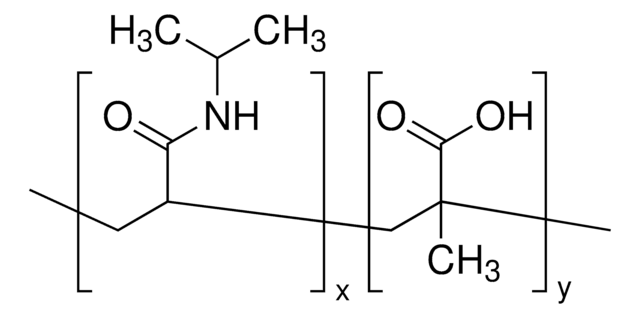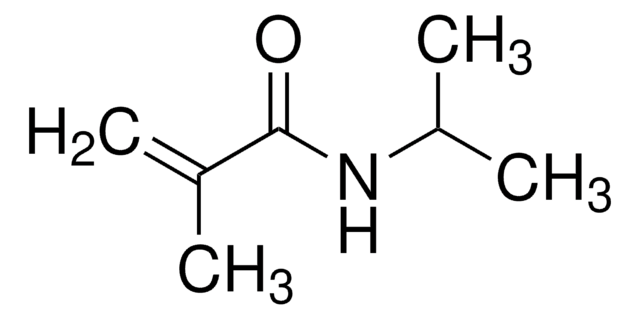535311
Poly(N-isopropylacrylamide)
Mn ~40,000
Synonym(s):
NIPAM polymer, PNIPAM, Polyacrylamide, polyNIPAM
About This Item
Recommended Products
mol wt
Mn 20,000-60,000
Mn ~40,000
mp
96 °C
SMILES string
CC(C)NC(=O)C=C
InChI
1S/C6H11NO/c1-3-5-7-6(8)4-2/h4H,2-3,5H2,1H3,(H,7,8)
InChI key
WDFKEEALECCKTJ-UHFFFAOYSA-N
Looking for similar products? Visit Product Comparison Guide
Related Categories
Application
Physical form
Storage Class Code
11 - Combustible Solids
WGK
WGK 1
Flash Point(F)
Not applicable
Flash Point(C)
Not applicable
Personal Protective Equipment
Certificates of Analysis (COA)
Search for Certificates of Analysis (COA) by entering the products Lot/Batch Number. Lot and Batch Numbers can be found on a product’s label following the words ‘Lot’ or ‘Batch’.
Already Own This Product?
Find documentation for the products that you have recently purchased in the Document Library.
Customers Also Viewed
Articles
The present publication focuses on synthesis and characterization of nanothick, chemically grafted polymer films (polymer brushes) on various inorganic and polymeric substrates.
Poly(N-isopropylacrylamide), or PNIPAM, is a stimuli-responsive polymer that responds to changes in pH and temperature and has a LCST around 32 C.
Tissue engineering has become a key therapeutic tool in the treatment of damaged or diseased organs and tissues, such as blood vessels and urinary bladders.
By altering the physicochemical properties, smart or intelligent drug delivery systems can be designed to deliver therapeutic molecules on-demand. Learn more about the application of stimuli-responsive materials in drug delivery.
Our team of scientists has experience in all areas of research including Life Science, Material Science, Chemical Synthesis, Chromatography, Analytical and many others.
Contact Technical Service








